from BBC News - Business https://ift.tt/2xVAeUD
//
September 30, 2018 / by Huzaifa / in BBC News - Business, news / with No comments /
![]()
September 30, 2018 / by Huzaifa / in BBC News - Business, news / with No comments /
![]()
September 30, 2018 / by Huzaifa / in BBC News - Business, news / with No comments /
![]()
September 30, 2018 / by Huzaifa / in BBC News - Business, news / with No comments /
![]()
September 30, 2018 / by Huzaifa / in BBC News - Business, news / with No comments /
![]()
September 30, 2018 / by Huzaifa / in BBC News - Business, news / with No comments /
![]()
September 30, 2018 / by Huzaifa / in BBC News - Business, news / with No comments /
![]()
September 30, 2018 / by Huzaifa / in BBC News - Business, news / with No comments /
![]()
September 30, 2018 / by Huzaifa / in BBC News - Business, news / with No comments /
![]()
September 30, 2018 / by Huzaifa / in news, TechCrunch / with No comments /
![]()
The promise of artificial intelligence is immense, but the roadmap to achieving those goals still remains unclear. Onstage at TechCrunch Disrupt SF, some of AI’s leading minds shared their thoughts on current competition in the market, how to ensure algorithms don’t perpetuate racism and the future of human-machine interaction.
Here are five takeaways on the state of AI from Disrupt SF 2018:
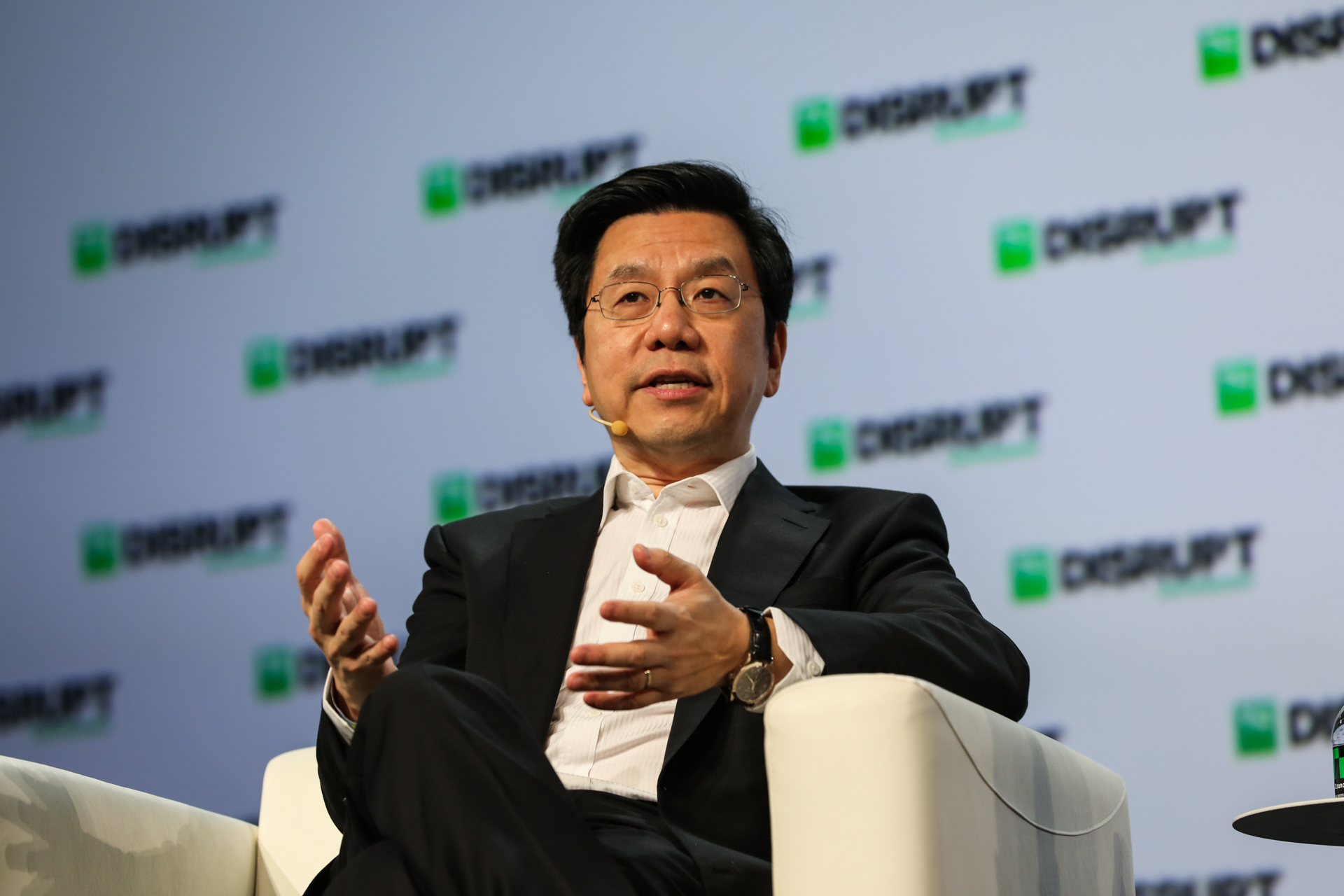
Sinnovation CEO Kai-Fu Lee (Photo: TechCrunch/Devin Coldewey)
The meteoric rise in China’s focus on AI has been well-documented and has become impossible to ignore these days. With mega companies like Alibaba and Tencent pouring hundreds of millions of dollars into home-grown businesses, American companies are finding less and less room to navigate and expand in China. AI investor and Sinnovation CEO Kai-Fu Lee described China as living in a “parallel universe” to the U.S. when it comes to AI development.
Sinovation Chairman & CEO Kai-FU Lee says China has surpassed the U.S. in terms of AI capabilities #TCDisrupt pic.twitter.com/r71HlXgDDd
— TechCrunch (@TechCrunch) September 5, 2018
“We should think of it as electricity,” explained Lee, who led Google’s entrance into China. “Thomas Edison and the AI deep learning inventors — who were American — they invented this stuff and then they generously shared it. Now, China, as the largest marketplace with the largest amount of data, is really using AI to find every way to add value to traditional businesses, to internet, to all kinds of spaces.”
“The Chinese entrepreneurial ecosystem is huge, so today the most valuable AI companies in computer vision, speech recognition, drones are all Chinese companies.”
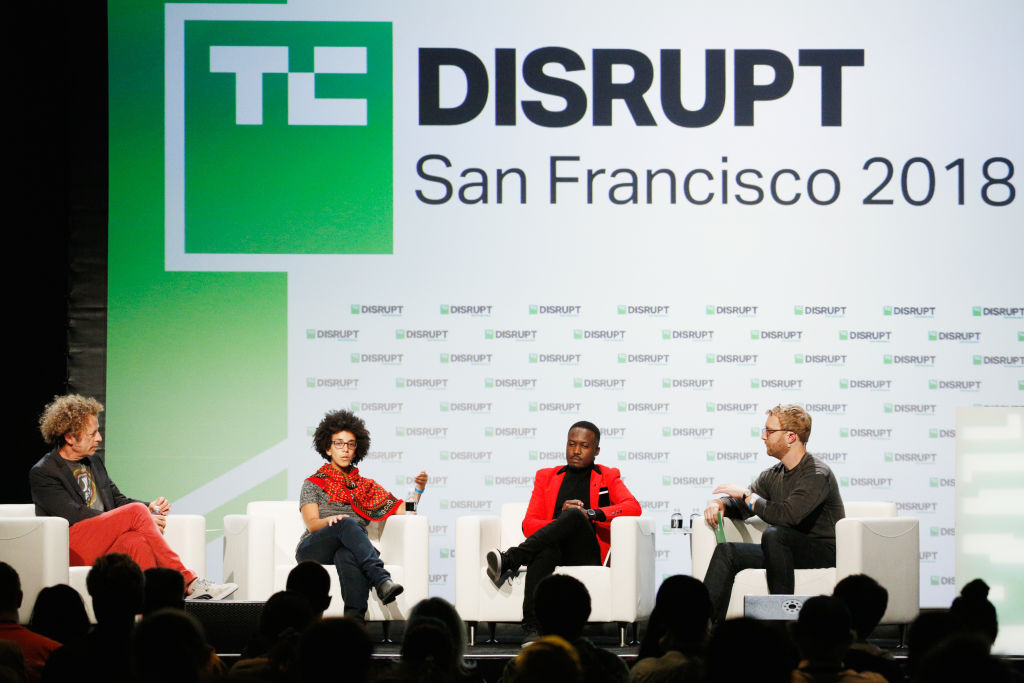
SAN FRANCISCO, CA – SEPTEMBER 07: (L-R) UC Berkeley professor Ken Goldberg, Google AI research scientist Timnit Gebru, UCOT founder and CEO Chris Ategeka and moderator Devin Coldewey speak onstage during Day 3 of TechCrunch Disrupt SF 2018 at Moscone Center on September 7, 2018 in San Francisco, California. (Photo by Kimberly White/Getty Images for TechCrunch)
AI promises to increase human productivity and efficiency by taking the grunt work out of many processes. But the data used to train many AI systems often falls victim to the same biases of humans and, if unchecked, can further marginalize communities caught up in systemic issues like income disparity and racism.
“People in lower socio-economic statuses are under more surveillance and go through algorithms more,” said Google AI’s Timnit Gebru. “So if they apply for a job that’s lower status they are likely to go through automated tools. We’re right now in a stage where these algorithms are being used in different places and we’re not event checking if they’re breaking existing laws like the Equal Opportunity Act.”
Algorithmic bias is a new face of an old problem rooted in income disparity and racism. Timnit Gebru (Google AI), Ken Goldberg (UC Berkeley) and Chris Ategeka (UCOT) outline steps to build more objective algorithms in the future. #TCDisrupt pic.twitter.com/XnK422JTL8
— TechCrunch (@TechCrunch) September 20, 2018
A potential solution to prevent the spread of toxic algorithms was outlined by UC Berkeley’s Ken Goldberg who cited the concept of ensemble theory, which involves multiple algorithms with various classifiers working together to produce a single result.
We’re right now in a stage where these algorithms are being used in different places and we’re not even checking if they’re breaking existing laws.
But how do we know if the solution to inadequate tech is more tech? Goldberg says this is where having individuals from multiple backgrounds, both in and outside the world of AI, is vital to developing just algorithms. “It’s very relevant to think about both machine intelligence and human intelligence,” explained Goldberg. “Having people with different viewpoints is extremely valuable and I think that’s starting to be recognized by people in business… it’s not because of PR, it’s actually because it will give you better decisions if you get people with different cognitive, diverse viewpoints.”
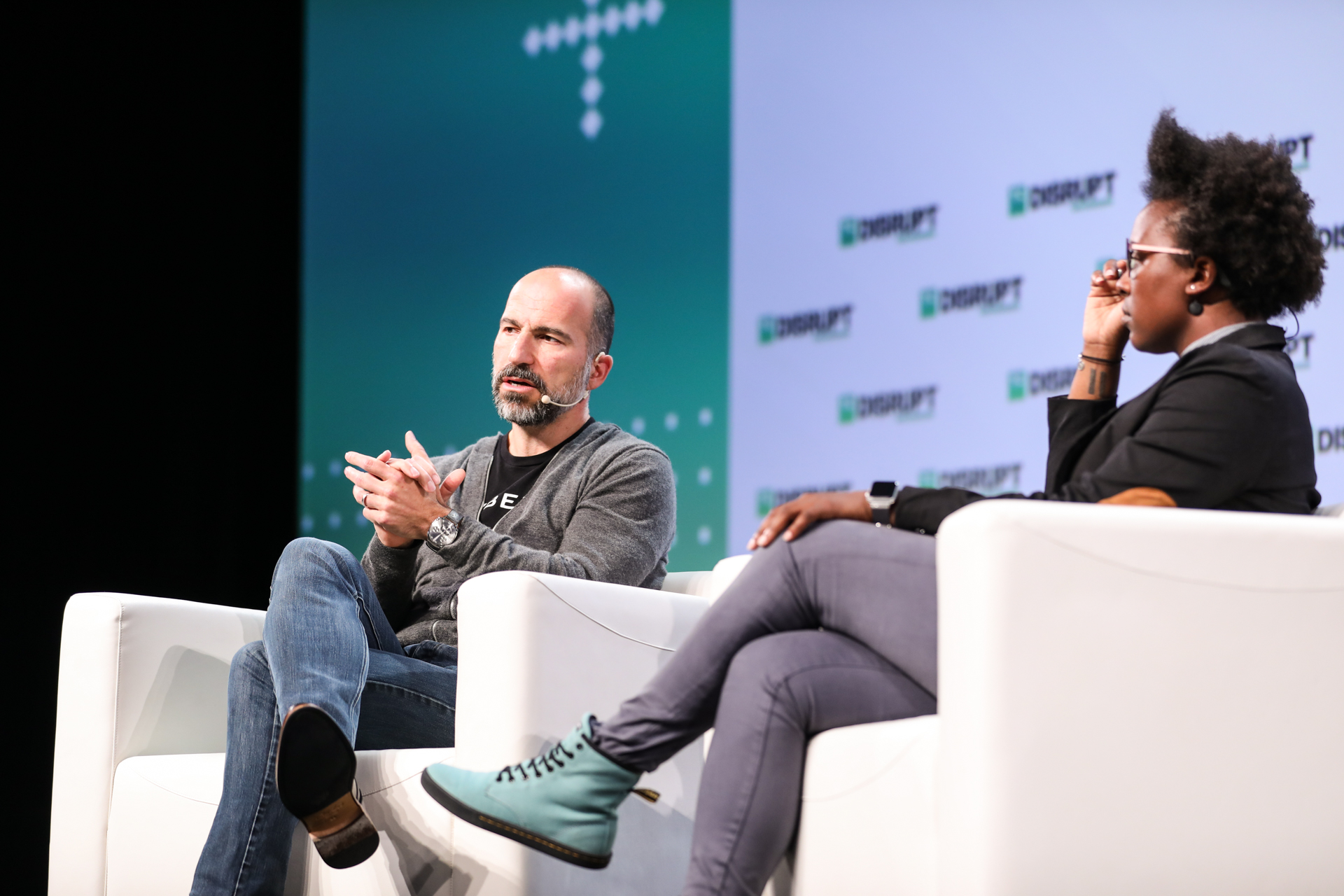
Uber CEO Dara Khosrowshahi (Photo: TechCrunch/Devin Coldewey)
Transportation companies often paint a flowery picture of the near future where mobility will become so automated that human intervention will be detrimental to the process.
That’s not the case, according to Uber CEO Dara Khosrowshahi. In an era that’s racing to put humans on the sidelines, Khosrowshahi says humans and machines working hand-in-hand is the real thing.
“People and computers actually work better than each of them work on a standalone basis and we are having the capability of bringing in autonomous technology, third-party technology, Lime, our own product all together to create a hybrid,” said Khosrowshahi.
The future of autonomous travel will rely on people and computers working together, says Uber CEO Dara Khosrowshahi #TCDisrupt pic.twitter.com/K5668OtRXi
— TechCrunch (@TechCrunch) September 6, 2018
Khosrowshahi ultimately envisions the future of Uber being made up of engineers monitoring routes that present the least amount of danger for riders and selecting optimal autonomous routes for passengers. The combination of these two systems will be vital in the maturation of autonomous travel, while also keeping passengers safe in the process.
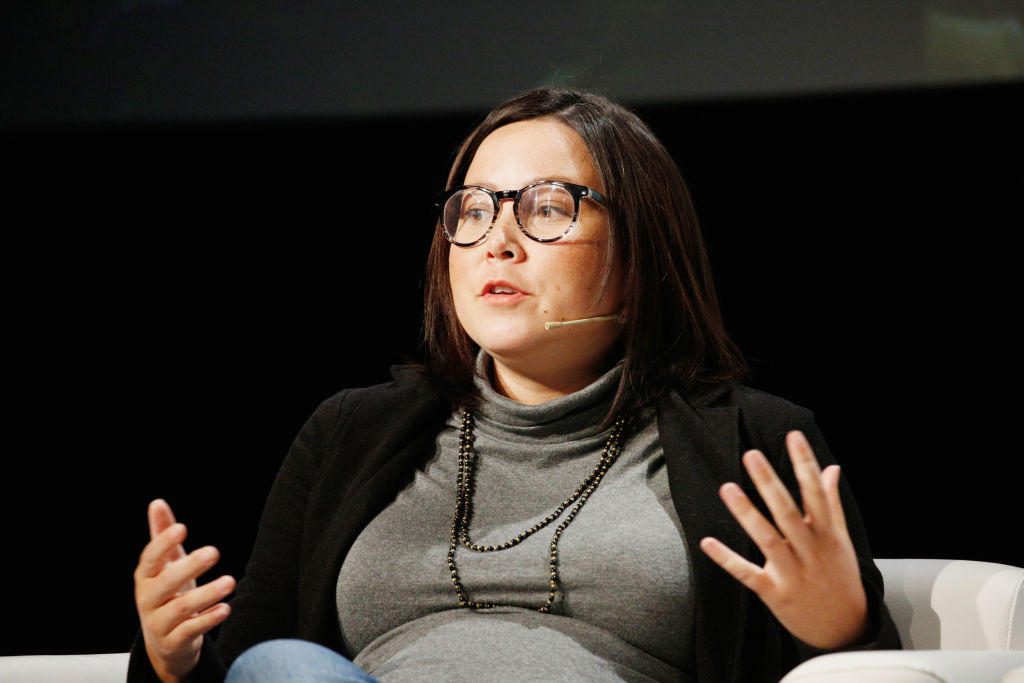
SAN FRANCISCO, CA – SEPTEMBER 07: Human Rights Data Analysis Group lead statistician Kristian Lum speaks onstage during Day 3 of TechCrunch Disrupt SF 2018 at Moscone Center on September 7, 2018 in San Francisco, California. (Photo by Kimberly White/Getty Images for TechCrunch)
Last July, ProPublica released a report highlighting how machine learning can falsely develop its own biases. The investigation examined an AI system used in Fort Lauderdale, Fla., that falsely flagged black defendants as future criminals at a rate twice that of white defendants. These landmark findings set off a wave of conversation on the ingredients needed to build fair algorithms.
One year later AI experts still don’t have the recipe fully developed, but many agree a contextual approach that combines mathematics and an understanding of human subjects in an algorithm is the best path forward.
How can we create fair algorithms? Kristian Lum (Human Rights Data Analysis Group) says there’s no clear answer, but it depends on the contextual data training the AI #TCDisrupt pic.twitter.com/CEiglgeX2d
— TechCrunch (@TechCrunch) September 19, 2018
“Unfortunately there is not a universally agreed upon definition of what fairness looks like,” said Kristian Lum, lead statistician at the Human Rights Data Analysis Group. “How you slice and dice the data can determine whether you ultimately decide the algorithm is unfair.”
Lum goes on to explain that research in the past few years has revolved around exploring the mathematical definition of fairness, but this approach is often incompatible to the moral outlook on AI.
“What makes an algorithm fair is highly contextually dependent, and it’s going to depend so much on the training data that’s going into it,” said Lum. “You’re going to have to understand a lot about the problem, you’re going to have to understand a lot about the data, and even when that happens there will still be disagreements on the mathematical definitions of fairness.”
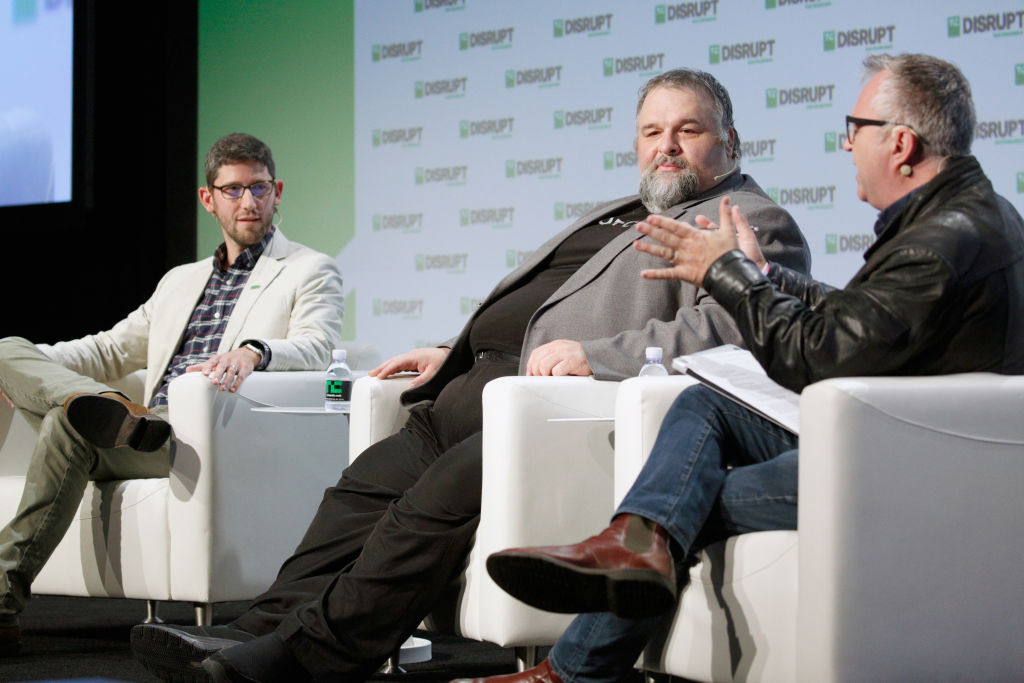
SAN FRANCISCO, CA – SEPTEMBER 06: (l-R) Duo VP of Security Mike Hanley, Okta executive director of Cybersecurity Marc Rogers and moderator Mike Butcher speak onstage during Day 2 of TechCrunch Disrupt SF 2018 at Moscone Center on September 6, 2018 in San Francisco, California. (Photo by Kimberly White/Getty Images for TechCrunch)
If previous elections have taught us anything it’s that security systems are in dire need of improvement to protect personal data, financial assets and the foundation of democracy itself. Facebook’s ex-chief security officer Alex Stamos shared a grim outlook on the current state of politics and cybersecurity at Disrupt SF, stating the security infrastructure for the upcoming Midterm elections isn’t much better than it was in 2016.
So how effective will AI be in improving these systems? Marc Rodgers of Okta and Mike Hanley of Duo Security believe the combination of AI and a security model called Zero Trust, which cuts off all users from accessing a system until they can prove themselves, are the key to developing security systems that actively fight off breaches without the assistance of humans.
Marc Rodgers (Okta) and Mike Hanley (Duo) outline how AI and Zero Trust will work hand-in-hand to build future security systems #TCDisrupt pic.twitter.com/h23e8Kzu2j
— TechCrunch (@TechCrunch) September 25, 2018
“AI and Zero Trust are a marriage made in heaven because the whole idea behind Zero Trust is you design policies that sit inside your network,” said Rodgers. “AI is great at doing human decisions much faster than a human ever can and I have great hope that as Zero Trust evolves, we’re going to see AI baked into the new Zero Trust platforms.”
By handing much of the heavy lifting to machines, cybersecurity professionals will also have the opportunity to solve another pressing issue: being able to staff qualified security experts to manage these systems.
“There’s also a substantial labor shortage of qualified security professionals that can actually do the work needed to be done,” said Hanley. “That creates a tremendous opportunity for security vendors to figure out what are those jobs that need to be done, and there are many unsolved challenges in that space. Policy engines are one of the more interesting ones.”
September 30, 2018 / by Huzaifa / in news, TechCrunch / with No comments /
![]()
Facebook is cleaning up after a major security incident exposed the account data of millions of users. What’s already been a rocky year after the Cambridge Analytica scandal, the company is scrambling to regain its users trust after another security incident exposed user data.
Here’s everything you need to know so far.
What happened?
Facebook says at least 50 million users’ data were confirmed at risk after attackers exploited a vulnerability that allowed them access to personal data. The company also preventively secure 40 million additional accounts out of an abundance of caution.
What data were the hackers after?
Facebook CEO Mark Zuckerberg said that the company has not seen any accounts compromised and improperly accessed — although it’s early days and that may change. But Zuckerberg said that the attackers were using Facebook developer APIs to obtain some information, like “name, gender, and hometowns” that’s linked to a user’s profile page.
What data wasn’t taken?
Facebook said that it looks unlikely that private messages were accessed. No credit card information was taken in the breach, Facebook said. Again, that may change as the company’s investigation continues.
What’s an access token? Do I need to change my password?
When you enter your username and password on most sites and apps, including Facebook, your browser or device is set an access tokens. This keeps you logged in, without you having to enter your credentials every time you log in. But the token doesn’t store your password — so there’s no need to change your password.
Is this why Facebook logged me out of my account?
Yes, Facebook says it reset the access tokens of all users affected. That means some 90 million users will have been logged out of their account — either on their phone or computer — in the past day. This also includes users on Facebook Messenger.
When did this attack happen?
The vulnerability was introduced on the site in July 2017, but Facebook didn’t know about it until this month, on September 16, 2018, when it spotted a spike in unusual activity. That means the hackers could have had access to user data for a long time, as Facebook is not sure right now when the attack began.
Who would do this?
Facebook doesn’t know who attacked the site, but the FBI is investigating, it says.
However, Facebook has in the past found evidence of Russia’s attempts to meddle in American democracy and influence our elections — but it’s not to say that Russia is behind this new attack. Attribution is incredibly difficult and takes a lot of time and effort. It recently took the FBI more than two years to confirm that North Korea was behind the Sony hack in 2016 — so we might be in for a long wait.
How did the attackers get in?
Not one, but three bugs led to the data exposure.
In July 2017, Facebook inadvertently introduced three vulnerabilities in its video uploader, said Guy Rosen, Facebook’s vice president of product management, in a call with reporters. When using the “View As” feature to view your profile as someone else, the video uploader would occasionally appear when it shouldn’t display at all. When it appeared, it generated an access token using the person who the profile page was being viewed as. If that token was obtained, an attacker could log into the account of the other person.
Is the problem fixed?
Facebook says it fixed the vulnerability on September 27, and then began resetting the access tokens of people to protect the security of their accounts.
Did this affect WhatsApp and Instagram accounts?
Facebook said that it’s not yet sure if Instagram accounts are affected, but were automatically secured once Facebook access tokens were revoked. Affected Instagram users will have to unlink and relink their Facebook accounts in Instagram in order to cross post to Facebook.
On a call with reporters, Facebook said there is no impact on WhatsApp users at all.
Are sites that use Facebook Login also affected?
If an attacker obtained your Facebook access token, it not only gives them access to your Facebook account as if they were you, but any other site that you’ve used Facebook to login with, like dating apps, games, or streaming services.
Will Facebook be fined or punished?
If Facebook is found to have breached European data protection rules — the newly implemented General Data Protection Regulation (GDPR) — the company can face fines of up to four percent of its global revenue.
However, that fine can’t be levied until Facebook knows more about the nature of the breach and the risk to users.
Another data breach of this scale – especially coming in the wake of the Cambridge Analytica scandal and other data leaks – has some in Congress calling for the social network to be regulated. Sen. Mark Warner (D-VA) issued a stern reprimand to Facebook over today’s news, and again pushed his proposal for regulating companies holding large data sets as ““information fiduciaries” with additional consequences for improper security.
FTC Commissioner Rohit Chopra also tweeted that “I want answers” regarding the Facebook hack. It’s reasonable to assume that there could be investigators in both the U.S. and Europe to figure out what happened.
Can I check to see if my account was improperly accessed?
You can. Once you log back into your Facebook account, you can go to your account’s security and login page, which lets you see where you’ve logged in. If you had your access tokens revoked and had to log in again, you should see only the devices that you logged back in with.
Should I delete my Facebook account?
That’s up to you! But you may want to take some precautions like changing your password and turning on two-factor authentication, if you haven’t done so already. If you’re weren’t impacted by this, you may want to take the time to delete some of the personal information you’ve shared to Facebook to reduce your risk of exposure in future attacks, if they were to occur.
September 30, 2018 / by Huzaifa / in news, TechCrunch / with No comments /
![]()
Picture it. The scene is Silicon Valley. Suddenly an investment firm materializes on the scene and starts writing checks bigger than anyone is accustomed to seeing. Fellow investors start to privately complain. Its partners are poseurs, they say. The firm is driving up valuations, they continue. It’s going to ruin venture capital, they conclude.
It was said of Andreessen Horowitz when it burst onto the scene in 2009. (Remember its then jaw-dropping decision to hand GitHub a $100 million check in 2012?) Today, it’s being said even more widely about the SoftBank Vision Fund, and little wonder, given that SoftBank is fast plowing $100 billion into mostly venture-backed companies and that, according to its CEO, Masayoshi Son, more $100 billion funds are coming soon.
Just this week, the firm led a $1 billion round in the India-based hotel chain and room aggregator Oyo. It also participated in two other enormous deals, leading a $450 million round for the real estate tech platform Compass, which creates tools for residential real estate agents and more recently launched a commercial brokerage division. Separately, it led a $400 million round in the home-buying startup Opendoor.
What might be the longer-term impact of so much capital getting jammed into still private companies? How does SoftBank decide who to fund, and who to steer around? On Tuesday night, at a StrictlyVC event in San Francisco, we had the chance to talk with two of its investors, Vision Fund Managing Director Jeff Housenbold and Anna Lo, a director with SoftBank Investment Advisors, to learn more about how the whole thing works — and to run past them some of the criticisms that their fellow investors have been whispering to us.
In addition to some basic stats (SoftBank’s Vision Fund is run by 86 people, including nine managing directors, across offices in Tokyo, London, and San Carlos, Ca.; it has a 14-year investing period), you’ll learn what SoftBank won’t touch, how big a check it can write before asking for permission from its own investors, and what happens to companies that say they are in talks with the Vision Fund when they are not.
Also, spoiler alert: the Vision Fund has vice clauses that prevent it from funding tobacco, firearms and certain other companies, as do most venture firms. (We’d asked in the context of discussing whether SoftBank might ever fund the e-cig company Juul, which also appeared at the event.)
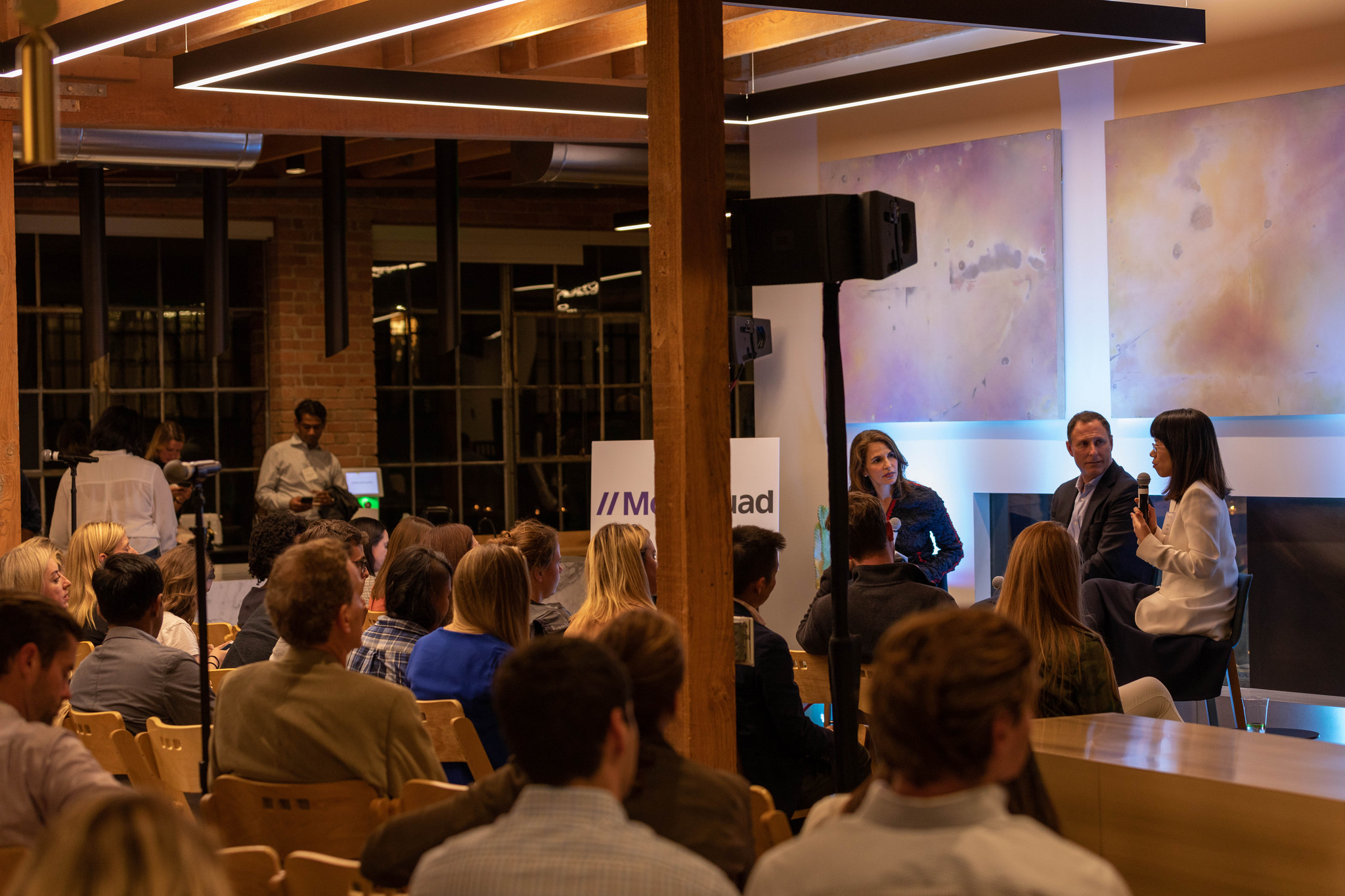
You can watch the chat for yourself below. In the meantime, some outtakes from that conversation follow, edited lightly for length:
TC: Walk us through how you decide on which companies to approach.
AL: Definitely leaders in their respective markets and geographies. Excellent, rock star teams. We are very friendly and collaborative with our founders, so we need to see eye to eye on their vision. The criteria isn’t so different from a lot of VCs here in the audience.
TC: More specifically, what do you want to see?
JH: In the continuum of venture capital, we’re late-stage growth. Our minimum check size is $100 million. We’re looking for product-market fit [meaning] some revenue and some traction before we typically come into a deal. It depends on which industry and which company. It could be GMV. It could be revenue. If it’s in enterprise software, it could be how many clients do they have and the diversification of the revenue and what the repeats and retention rates [are].
But we’re looking for companies that are growing very quickly and could deploy a lot of capital in a differentiated way to either capture new customers, market share, enter into new geographies, expand their product portfolio, or move into adjacent markets.
TC: How do you think about making that first call? I would imagine when companies get a call from you, it’s both exciting and nerve wracking, because you’re clearly looking at a certain sector and probably not just talking to that one company.
JH: First, we’ll do landscape studies, and have strategic hypotheses around certain sectors and how technology is impacting that sector and driving innovation. So, let’s say, in the real estate sector: we took a scan and looked at over 80 different companies across different aspects of the value chain. So we’ve already mapped out which are the incumbents, who are the up-and-coming startups, who is differentiating themselves, who’s getting traction. And then we have a thesis [about] where can money be made in those value chains. And then we go and approach those companies.
The other thing, often the phone rings when you have a large fund. People call us opportunistically. So sometimes it’s like, ‘Oh, you know, we looked at that eight months ago; maybe we should take another look.’ Because now a new player entered, or this company has gotten more traction, or they completed that merger they told us about, where they move from $20 million in [annual recurring revenue] to now $100 million. And we’ll come back to that because they called us. So it’s a combination.
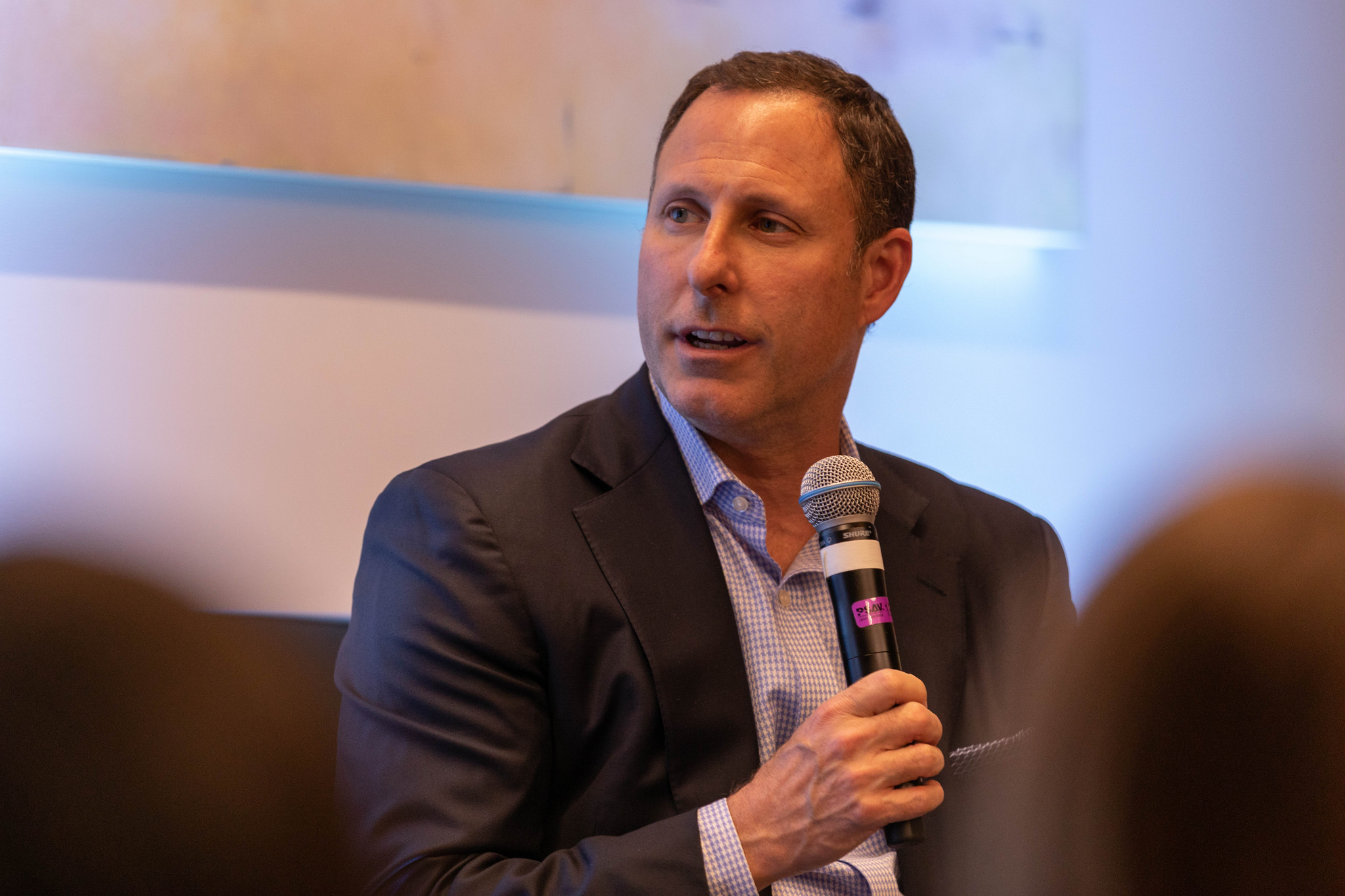
AL: We’re also looking for successful e-commerce models in emerging markets that are beginning to display characteristics such as in China in terms of rising income and the adoption of mobile internet.
JH: Also, half of what you read in the press, as you can imagine, is fake news. So companies are now using our name to create competitive tension in a term sheet, where we’ve never even met with the company. So I’ll read in the press, ‘Oh, we’re investing a billion in so and so company,’ and I log in and no one has ever met the company.
TC: Is that company then permanently off your screen?
JH: It doesn’t go [over] well internally.
TC: What does the decision-making process look like inside the Vision Fund? There are five managing directors in the Bay Area. You’re one of them. Is it a majority-rules situation?
JH: So, for example, my team looks after consumer and real estate [opportunities], so if it’s a deal in consumer and we’re intrigued by it, we’ll do a bunch of work. We’ll meet with the management team. We’ll do some outside-in and inside-out research, and we’ll come up with an investment thesis.
If we have conviction internally, we then take it to managing partners and we ask the management team to come back and meet all of us. If there are no major objections, then we bring [the deal] to a global deal call, where partners around the world come together once a week, and we walk through our investment case. And Masa is on that call often, and he’ll say, ‘I’m intrigued. Bring the entrepreneur to Japan.’ So Masa meets every single entrepreneur who we invest in, which is phenomenal because he’s brilliant . . . he has amazing pattern recognition. But what’s really amazing is, he’s fearless. He’ll sit with an entrepreneur and go, ‘I really love that concept. Have you thought about what if we remove barriers?’ Or, ‘What if capital wasn’t a restriction?’ Or, ‘What if we could land you a CFO, a CMO, and a CPO tomorrow. What would you do different?’ And it’s just fun to be in that environment.
And so if Masa says, “Yes, I’m intrigued, move forward,’ then we go to our formal investment committee to do confirmatory due diligence, then we close the deal.
TC: There was a story in the WSJ recently that talked of Masa’s brilliance but also painted a picture of his being impulsive. It said he can get excited about a company and rough out the deal terms and not leave much for everyone else to do. Does that happen often and either way, does it drive you crazy?
AL: All companies still come through the wringer, [including] the due diligence process, the investment committee meeting, sometimes lots of follow-up questions, and regulatory approvals.
JH: Sometimes where that changes is: we never bring a company to see Masa that we haven’t already kind of outlined what the deal terms will look like. But sometimes in that exploration, Masa says, ‘What if you went bigger, quicker, faster?’ Then instead of putting $300 million [into the company], he says, ‘Could you deploy $500 million? What would your business plan look like?’ And that’s where sometimes, the deal terms change. Because in the moment, he helps to think about, ‘Well, what if we bought your competitor and we move quickly in doing that? What if we took you to Japan quickly?’ And so the deal terms often change because of that more expansive worldview and the challenge to the management team of what they could do if we remove some of the perceived barriers to building a great franchise quickly.
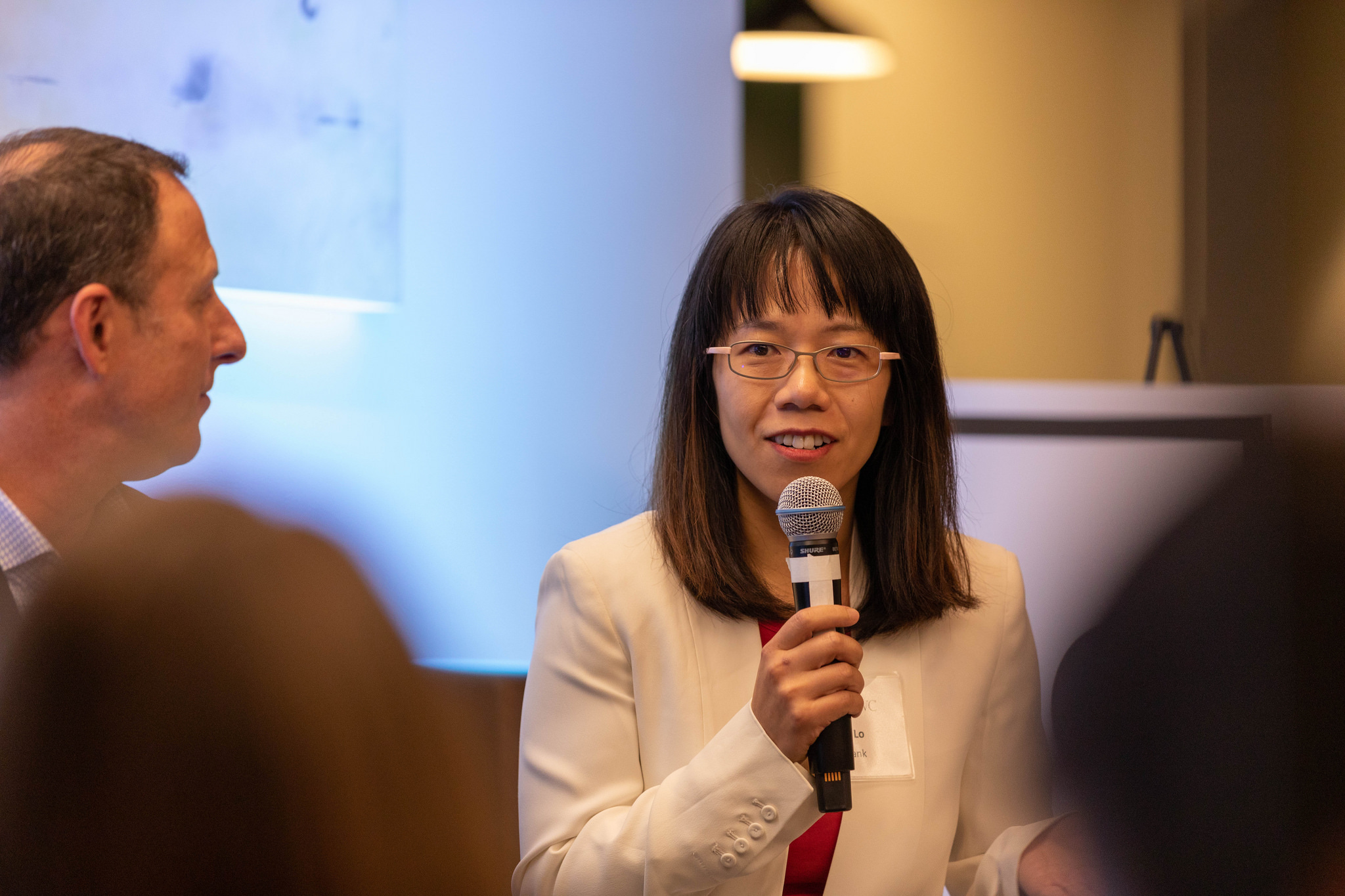
TC: I’m curious if you want something that Masa doesn’t want, if he can be persuaded, or if he wants something that you don’t want, he can be persuaded.
JH: Masa is a man of action. But he’s also a man of facts and wisdom. So I’ve had several deals where at first blush, he goes, ‘Yeah, I don’t really get it.’ And I’ll say, ‘Well, then I didn’t do a good enough job of explaining why we had such conviction around this investment.’ And so he’ll say, ‘Okay, come back. Take me through it so I can understand these aspects of it.’
Then there are instances where he says, ‘I was at this conference and met this entrepreneur and think they are really amazing. I want to invest in them.’ That’s not a mandate to go invest. That’s the permission to go explore. It’s our job to then go vet that [person’s company] and put it through the rigor and analytics and then come back to Masa. And there have been plenty examples where he was excited about something, and we say, ‘You know, the tech really doesn’t scale.’ Or sometimes it’s, ‘This is a great company and it’s number one, but we’ve found a much better, smaller company with better tech, a better management team, a better go-to-market strategy, better execution. We think we should [bet] on number two because they will pass number one in 14 months.’ And Masa if very open to [this]. If you know your stuff and it’s fact-based, he’s very open to changing his opinion.
TC: How much of the Vision Fund is being deployed in the U.S. versus elsewhere, and how mapped out is that in advance?
AL: It’s quite in line with how private equity gets deployed. If you think about the biggest venture and private equity ecosystems in the world, the two biggest being the U.S. and China, I think we do have 50-50 U.S and non-U.S investments across 30-plus companies. Based on what we’re seeing, I’d say Southeast Asia and the Middle East are next frontiers for us. But the check size would not be as large as in China, where it takes a lot more capital to build at scale.
TC: And how much are you looking to own of a company? I’ve read 15 to 20 percent, but it’s confusing, given the size checks you are writing.
JH: We don’t have targets. We’re late stage, so we like to have meaning minority stakes . . . so we don’t go in [thinking] we have to have 15 or 20 [percent ownership] . . . [though] 20 percent to 35 percent [ownership], is what I’d say if there was a normal distribution.
You can check out the rest of our interview below.
September 30, 2018 / by Huzaifa / in news, TechCrunch / with No comments /
![]()
To keep up with the growing sizes of early-stage funding rounds, Y Combinator announced this morning that it will increase the size of its investments to $150,000 for 7 percent equity starting with its winter 2019 batch.
Based in Mountain View, Calif., YC funds and mentors hundreds of startups per year through its 12-week program that culminates in a demo day, where founders pitch their companies to an audience of Silicon Valley’s top investors. Airbnb, Dropbox and Instacart are among its greatest successes.
Since 2014, YC has invested $120,000 for 7 percent equity in its companies. It has increased the size of its investment before — in 2007, a YC “standard deal” was just $20,000 — but the amount of equity the accelerator takes in exchange for the capital has been consistent.
“We thought a $30K increase was necessary to help companies stay focused on building their product without worrying about fundraising too soon,” Y Combinator chief executive officer Michael Seibel wrote in a blog post this morning. “Capital for startups has never been more abundant, and we’ll continue to focus on the things that remain hard to come by — community, simplicity, advice that’s systematic and personal, and above all, a great founder experience.”
Seibel was named CEO in 2016. Co-founder Sam Altman serves as YC’s president.
YC is also changing the way it crafts its investments. It will now invest in startups on a post-money safe basis rather than on a pre-money safe. YC invented the fundraising mechanism, safe, in 2013. A safe, or a simple agreement for future equity, means an investor makes an investment in a company and receives the company stock at a later date — an alternative to a convertible note. A safe is a quicker and simpler way to get early money into a company and the idea was, according to YC, that holders of those safes would be early investors in the startup’s Series A or later priced equity rounds.
In recent years, YC noticed that startups were raising much larger seed rounds than before and those safes were “really better considered as wholly separate financings, rather than ‘bridges’ into later priced rounds.” Founders, in the meantime, were struggling to determine how much they were being diluted.
YC’s latest change, in short, will make it easier for founders to know exactly how much of their company they are selling off and will make capitalization table math, which can be extremely grueling for founders, a whole lot easier.
The pre-money safe has been criticized by founders and investors alike.
Last year, a pair of venture capitalists who’d worked with YC companies, Dolby Family Partners’ Pascal Levensohn and Andrew Krowne, wrote that the safe method was screwing over founders.
“Entrepreneurs who don’t do the capitalization table math end up owning less of their company’s equity than they thought they did. And when an equity round is inevitably priced, entrepreneurs don’t like the founder dilution numbers at all. But they can’t blame the VC, they can’t blame the angels, so that means they can only blame… oops!”
A transition to a post-money safe will eliminate that cap table math headache while still being simple and efficient. The trade-off, YC says, “is that each incremental dollar raised on post-money safes dilutes just the current stockholders, which is often the founders and early employees.” So it’s not perfect, but it’s an improvement.
Recent YC grad Deepak Chhugani, the founder of The Lobby, which announced a $1.2 million investment this week, had a positive response to the changes and said either way, most of the resources provided by YC are priceless to a first-time founder, like himself.
YC is also tweaking its policy around pro-rata follow-ons. You can read about that here.
September 30, 2018 / by Huzaifa / in news, TechCrunch / with No comments /
![]()
US government investigators have lost a case to force Facebook to wiretap calls made over its Messenger app.
A joint federal and state law enforcement effort investigating the MS-13 gang had pushed a district court to hold the social networking giant in contempt of court for refusing to permit real-time listening in on voice calls.
According to sources speaking to Reuters, the judge later ruled in Facebook’s favor — although, because the case remains under seal, it’s not known for what reason.
The case, filed in a Fresno, Calif. district court, centers on alleged gang members accused of murder and other crimes. The government had been pushing to prosecute 16 suspected gang members, but are said to have leaned on Facebook to obtain further evidence.
Reuters said that an affidavit submitted by an FBI agent said that “there is no practical method available by which law enforcement can monitor” calls on Facebook Messenger. Although Facebook-owned WhatsApp uses end-to-end encryption to prevent eavesdroppers, not even the company can listen in — which law enforcement have long claimed that this hinders investigations.
But Facebook Messenger doesn’t end-to-end encrypt voice calls, making real-time listening in on calls possible.
Although phone companies and telcos are required under US law to allow police and federal agencies access to real-time phone calls with a court-signed wiretap order, internet companies like Facebook fall outside the scope of the law.
Privacy advocates saw this case as a way to remove that exemption, accusing the government of trying to backdoor the encrypted app, just two years after the FBI sued Apple over a similar request to break into the encrypted iPhone belonging to San Bernardino shooter Syed Farook.
FBI declined to comment. Facebook did not respond to a request for comment.
September 30, 2018 / by Huzaifa / in news, TechCrunch / with No comments /
![]()
Online education is a $160 billion+ industry today, but as it continues to mature, there are some inevitable ebbs and flows. In the latest development, TechCrunch has learned and confirmed that Udacity — the $1 billion startup co-founded by Sebastian Thrun that specialises in “nanodegrees” in tech subects that range from AI and coding through to the how-tos of digital marketing — has quietly cut about five percent of its staff since August across multiple offices globally.
“Back in August, five percent of our global employees were laid off based on carefully considered, strategic business decisions,” a spokesperson told TechCrunch in an emailed statement. “We are supporting our former and current employees through the transition. Our business continues to grow, with offices in India, China, Germany, Brazil, Egypt, and the United Arab Emirates, in addition to Silicon Valley. We continue to hire for key roles.”
The company does not disclose an exact number of employees it has across globally, except to say that it is over 500, meaning that this change is affecting about 25 people — the same number that a source had originally give us.
It’s not clear exactly what is going on at Udacity to prompt the layoffs, either in terms of the existing business or what it may have planned for the future.
Udacity says that it has over 50,000 students enrolled in its six-12-month nanodegree programs, but that is a figure that it has not updated in almost a year, when it emerged that Shernaz Daver, the CMO who was credited for turning around the company, was leaving Udacity.
Overall, Udacity says the number of registered students on the platform is higher than this, now at over 10 million — which also includes one-off free courses as well as partnerships with businesses. Udacity works with companies like Google, Facebook, Amazon and others to develop its curriculum, and it counts Accenture, AT&T, Bank of America, GE and Ford among its customers.
The company made $70 million 2017, but it has not provided guidance on how it is doing this year. (That $70 million figure was first released in February this year, when Udacity’s CEO Vishal Makhijani hinted the company was eyeing up an IPO.)
In terms of funding, Udacity has not raised any money since 2015 — when it closed a $105 million round led by publisher Bertelsmann that catapulted it to a $1 billion valuation. It’s raised $163 million to date, with other investors including Andreessen Horowitz, Ballie Gifford, Charles River Ventures, Cox Enterprises and GV.
A rush of companies have entered the online education space — which has been around in one form or another since the start of the web, and indeed you could argue went hand-in-hand with some of the earliest intentions behind the internet. Offerings run the gamut of what “education” can entail: single courses, full degrees, professional development, casual hobbies, gamefied children’s education, and much more — using videos, mobile technology, VR, AI to tailor courses, curriculums approved by leading academics and educators, and much more to make the learning more sticky and effective.
Udacity has competitors, effectively, from many parts of that spectrum, but some of the more notable include Coursera, Lynda (which is now part of LinkedIn and Microsoft) and Khan Academy.
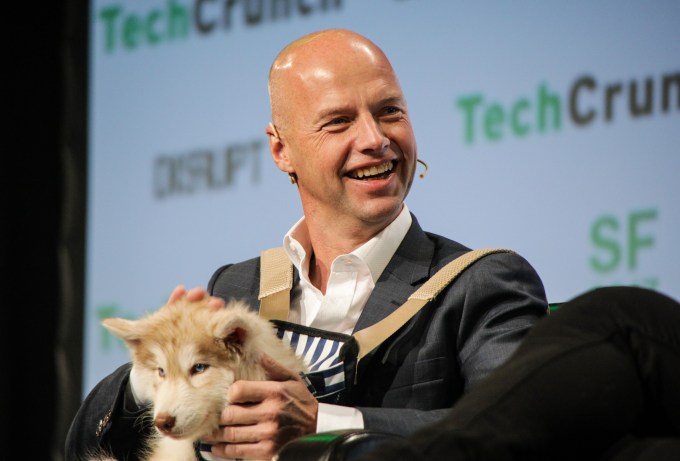
Sebastian Thrun (Udacity) at TechCrunch Disrupt SF 2017
Since its launch in 2011, Udacity has played a few different roles within that evolution. The company initially started as one of the early providers of “MOOCs” (Massive Open Online Courses): Thrun (pictured above, who co-founded the company with David Stavens and Mike Sokolsky; neither are with the company anymore) left a position as a professor of AI at Stanford to start Udacity when he found that 160,000 students signed up for an open invite he made to take his class for free online.
Higher educational institutions worked closely with Udacity in the early days, although the company appeared to move away from that focus that in 2013 after some hiccups, including San Jose State University suspending a pilot with the startup after pass rates were deemed too low.
Instead it started to work with a number of large tech players like Google (where Thrun is credited with the company’s early work on building self-driving cars) to develop a new set of courses to target older people and those already in the workforce. That pivot appeared to turn the company profitable at one point, as it expanded its sights to further markets like India.
Then, Thrun stepped away as the CEO (he’s now president) and the role was taken on by Makhijani, who had been the COO. Under him, the company appeared to focus a little more: it looked set to build deeper coding experiences with its first acquisition, of CloudLabs; and it spun out its self-driving car program, which was renamed Voyage and is now building its own business. It’s likely that this latest turn is one more step in how Udacity is aiming to position for whatever comes next.